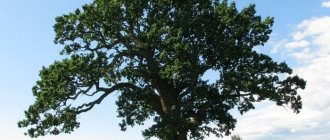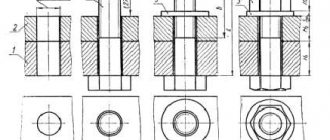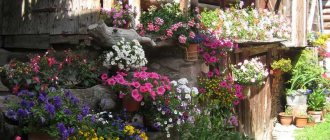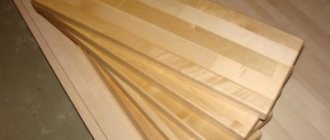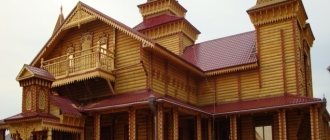Plants produce a huge number of seeds. For their germination and further successful growth and development, a sufficient amount of moisture, nutrients, and space is required. If all the seeds remain near the mother plant, then the chances that most of them will receive favorable conditions for existence will be much less. The problem of seed dispersal is solved by plants with the help of fruits.
Oak fruits are spread by water
20.2.8. Distribution of fruits and seeds
After seed formation, either the entire fruit or the seed (or seed) it contains is separated from the parent sporophyte.
If the pericarp (wall of the fruit) becomes hard and dry, the fruit is called dry, but if it becomes fleshy, then the fruit is called juicy. A dry fruit may be dehiscent or indehiscent, depending on whether the release of the seeds is associated with rupture of its wall or not. Dry fruits can also split into several single-seeded segments; such fruits are called schizocarpous. The further the seeds are dispersed, the less likely there is competition from the parent plant. This also gives them a greater chance of colonizing new territory, leading to an increase in overall population size over time. However, there is a danger that the seed, being carried too far from the parent plant, will not find a suitable place for germination.
There are three main external factors that disperse seeds - wind, animals and water. In addition, there are mechanisms of autochory, often associated with the explosive release of seeds from the fruit. Examples of all these methods of seed dispersal are presented in Fig. 20.28.
Animal seed dispersal is generally more reliable because animals tend to visit fertile areas suitable for seed germination. The fruits, equipped with spines or hooks, cling to the skin or fur of passing animals and can be carried some distance before falling off or being torn off. Attachments develop from different parts of the fruit or surrounding structures. Examples are the fruits of the tenacious bedstraw ( Galium aparine
), gravilate (
Geum
), burdock (
Arctium
), carrot (
Daucus
), buttercup (
Ranunculus
), string (
Bidens
), agrimony (
Agrimonia
). Gravilat has hooks on the post. In burdock, a cluster of small fruits is surrounded by hooked involucre leaves (modified leaves) forming a single structure; In addition, there are small, hard hairs that penetrate the skin, causing irritation and scratching, as a result of which the fruits fall off. In bedstraw, carrots and buttercups, the pericarp is covered with projections (attachments). In the series, the fruit is equipped with a fly, like a dandelion, but with strong thorns. The receptacle of the agrimony is covered with hard, curved spines.
Rice. 20.28. Different types of fruits and seeds and how they are distributed. Bedstraw (Galium aparine) and agrimony
Bedstraw fruit with numerous hooks developing from the pericarp. Micrograph taken using a scanning electron microscope.
Examples of juicy fruits are plum fruits ( Prunus
), blackberry (
Rubus
), tomato (
Lycopersicum
), apple (
Malus
), strawberry (
Fragaria
). The fleshy parts of these fruits serve as food for animals, including birds. When ripe, they usually acquire bright colors and aroma that attract animals. The animal eats and digests the fruit, but the seeds, resistant to digestive enzymes, pass unharmed through its intestines and are excreted, often landing on fertile soil. Nutrients contained in excrement can increase the fertility of the soil around the seed.
The plum is an example of a fruit called a drupe; its pericarp consists of three layers: the exocarp (protective skin), the succulent mesocarp and the internal stony endocarp (“pits”). These layers protect the seed, preventing it from being digested. Other examples of drupes include peach, cherry and almond fruits (also belonging to the genus Prunus
), elderberry (
Sambucus
) and coconut palm (
Cocos nucifera
; fruit with a fibrous mesocarp). Almonds that go on sale are usually cleaned of the subcarp and mesocarp.
Rice. 20.28. Different types of fruits and seeds and how they are distributed. Plum (longitudinal section)
Rice.
20.28. Different types of fruits and seeds and how they are distributed. A blackberry berry in a longitudinal section is a collection of drupes formed from one flower. The tomato fruit, formed as a result of the fusion of two, three or four carpels, belongs to the type of berry-shaped
.
It is similar to a drupe, but its endocarp is fleshy rather than stony. The berry-like fruits also include the fruits of black currant and gooseberry ( Ribes spp.
), pumpkin (
Cucurbita
), orange and lemon (
Citrus spp.
), banana (
Musa
), grape (
Vitis
), date (
Phoenix dactylifera
; contains one woody seed).
Rice.
20.28. Different types of fruits and seeds and how they are distributed. Tomato (longitudinal section) Sometimes the receptacle swells, becomes fleshy and itself resembles a fruit. Such fruits are called false. Examples include apple and strawberry fruits.
The false fruit of the apple tree is a type of apple, or pumpkin. In fruits of this type, the pulp is formed from a hollow receptacle surrounding the enclosed carpels. The pericarp of the true fruit develops into a “core” containing the seeds. Other examples include the pear ( Pyrus
) and hawthorn (
Crataegus
)
Rice.
20.28. Different types of fruits and seeds and how they are distributed. Apple (longitudinal section) Strawberries have small green fruits called achenes and located on an overgrown receptacle; each achene contains one seed.
Rice. 20.28. Different types of fruits and seeds and how they are distributed. Strawberry (longitudinal section)
Nut-shaped
fruits, for example, oak (
Quercus
), beech (
Fagus
), chestnut (
Casta nea
), relatively large dry fruits that do not split and do not throw out seeds. Nut-shaped fruits are distributed entirely, often with the help of stocking animals, especially rodents such as squirrels. The picture shows an oak fruit called an acorn.
Rice.
20.28. Different types of fruits and seeds and how they are distributed. The fruit of the oak tree is an acorn. Many wind-dispersed plants have special adaptations. These include volatiles, which are supplied, for example, with fireweed seeds ( Epilobium
), willow (
Salix
), cotton (
Gossypium hirsutum
), dandelion (
Taraxacum
), clematis (
Clematis
), and lionfish, such as pine (gymnosperm), elm (
Ulmus
), ash (
Fraxinus
), maple (
Acer
), hornbeam (
Carpinus
).
Planting and care
The tree is planted in a bright, open place with a distance of at least 4-5 m from other plants and buildings - the branched root system can damage the foundation of buildings. In addition, in the future, a tree with a spreading, dense crown will become a source of shade, so you should not plant in places where this is undesirable. The soil is preferably fertile, rich in minerals, and moderately moist. There are 3 ways to grow a young oak tree: plant an acorn, root cuttings, or purchase a seedling from a nursery.
The plant can be replanted without harm only at an early age. If a tree grows in one place for a long time, its roots grow and deepen and can be damaged when transplanted.
Caring for the plant is simple and consists of regular weed control, loosening and watering. During the first years, the tree needs constant irrigation, which is especially important in the hot summer.
From 2 years of age, it is advisable to feed them with complex fertilizers. Timely pest control and shelter before the onset of frost are also necessary.
Young oak trees attract birds and rodents. To prevent the tree from being damaged, a protection is built - a small fine-mesh fence around the planting.
All types of oak trees require sunlight and regular irrigation. To prevent other plants from taking nutrients from the growing oak tree, the area around it should be cleared of weeds.
They take care of the tree until it gets stronger (on average up to 5 years), then the plant can develop independently.
Who sows the oaks?
What kind of adaptations do plants to continue their species and disperse seeds ?
There are parachutes, like those of dandelions, and tenacious spines (they stick to a person’s clothing or to the fur of an animal - and travel until they fall into the ground), like those of a string, a plantain. Light seeds of birch, pine, and spruce are carried far away by the wind over the snow crust. Insects and animals (elephants, wild pigs, for example, are perhaps the only distributors of crushed fruits with seeds of the Rafflesia Arnoldi plant, which has the largest flower in the world. And this amazing plant grows on some islands in Southeast Asia) also distribute seeds many plants.
Many fruits are dispersed by birds. But what is it like for the oak tree? Round, smooth, large acorns are too tough for birds, and they are not able to cling to anything, and the wind will not carry them away.
However, young trees can often be found among pine plantings, where mature oaks are nowhere to be seen. It turns out that the oak tree has sowers.
Jays , making supplies for the winter, carry acorns over long distances, hiding them in moss or fallen pine needles. For jays living in the European part of Russia, Ukraine, and Belarus, the main food is acorns. The jay makes significant reserves of them for the winter, up to 4 kg. And then they forget about their pantries - can you really remember them all? So oak trees grow in the most unexpected places.
Source
Using wood
Construction
- Parquet;
- Cladding materials for walls and ceilings;
- Durable window frames;
- Veneer for finishing;
- Elite doors. Made of bog oak - both entrance and external;
- Shipbuilding and shipbuilding;
- Mining (fastening in mines);
- Wine barrels;
- Hydraulic structures;
- Wheels for horse-drawn carriages.
Medicine
Preparations and components of oak are used either independently or accompanying the main treatment. The active and astringent components of oak bark have been known for thousands of years. A decoction of the bark and leaves is used both externally in the form of lotions and compresses, and internally for many gastrointestinal diseases. And also as a rinse for toothache and inflammation of the throat and oral cavity.
In medicine, decoctions of leaves and bark are used. Specific use cases:
- Gastrointestinal pathologies;
- Poisoning;
- Kidney problems;
- Diseases. Associated with bladder inflammation;
- Use of astringent and tanning properties for gargling and mouthwash for ARVI and sore throats;
- Externally – wounds, abrasions, ulcers, eczema.
Oak fruits are spread by water
In plants with single-seeded dry fruits (acorn, nut, achene, grain), the fruits themselves are scattered along with the seed. The seed coat of such seeds is poorly developed, because The protection function is performed by the pericarp. Such fruits are often distributed by animals that feed on them and store them (chipmunks, squirrels, mice). The seeds of juicy fruits are distributed by animals that eat them. Such seeds should retain the ability to germinate after passing through the animal’s digestive tract (some even improve their germination rate). Therefore, they have a dense seed coat (for berries) or a stony layer of the pericarp - a stone.
Some seeds are carried by insects. For example, ants drag grass seeds with succulent appendages-outgrowths (celandine, hoofed grass, violet). Therefore, thickets of these plants can also indicate ant trails.
Cross pollination of different plants
One of the ways plants reproduce in forest conditions is cross-pollination of different plants . The early flowering of hazel, alder, aspen, willow, (more: Early flowering trees and shrubs) and oak forest grasses, the flowering of plants with white flowers, when the oak forest trees become leafy and the forest becomes dark - all these are examples of plants adapting to cross-pollination.
alder blossom
The flowering of undergrowth trees has the same characteristics - wild apple and pear trees, mountain ash, viburnum, elderberry and many other trees also have white flowers, and this helps insects find them in the darkness of the forest.
Elderberry color
Methods of distribution of fruits and seeds
After seed formation, either the entire fruit or the seed (or seed) it contains is separated from the parent plant. The longer the seeds are dispersed, the less likely there is competition from the parent plant. This also gives them a greater chance of colonizing new territory, leading to an increase in overall population size over time. However, there is a danger that the seed, being carried too far from the parent plant, will not find a suitable place for germination.
Collection of medicinal material
The bark is collected only from young oak trees, and only in the spring, when the active movement of sap in the tree begins.
And when it has a gray-brown color and a glossy texture, without vertical cracks. Oak trees are cut down completely to collect bark, since they will not survive after it is removed from the trunk. Dry the bark in a ventilated area, avoiding an increase in humidity. Bright light during drying is also not allowed. It is also advisable to collect leaves for brewing tanning infusions in the spring or early summer, when they are fully blossomed and formed.
Diseases and pests
Insects that damage leaves and wood are destructive to the tree: oak leaf roller, oak longhorned beetle, fruit cap moth. To destroy pests, the plant is sprayed with insecticides (Fitoverm, Kinmiks and others).
Powdery mildew, a fungal disease caused by microscopic pathogens, poses a danger to the tree. When infected, a white coating develops on the leaves, and droplets of liquid appear as the spores mature. The disease can be easily stopped at the initial stage by irrigating with copper sulfate diluted in water.
You are currently unable to view or distribute the video lesson to students.
To access this and other video lessons in the kit, you need to add it to your personal account by purchasing it from the catalog.
